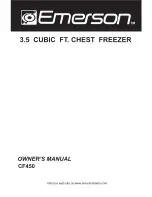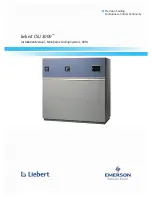
en
30
Defrosting
A layer of frost on the container panels
impairs the cooling effect on the frozen
food and increases the power
consumption. You must regularly remove
this layer of frost.
General tips
n
When putting food in or taking food
out, open the lid of the chest for as
little time as possible.
n
Do not install the chest freezer in a
damp room. A high level of humidity
aids the formation of frost.
n
Package fresh food so that it is as
air-tight as possible.
!
Attention
Do not scrape away the layer of ice
using a knife or a sharp object. You
could damage the refrigerant pipes. If
refrigerant shoots out, it may ignite or
cause eye injuries.
Defrosting the appliance
n
Switch on the SuperFreezing function
approx. 4 hours before the defrosting
to ensure that the food is thoroughly
frozen.
n
Then clear out the frozen food and
store it in several layers of newspaper
or wrap it in a cover and store it in a
cool place.
n
Leave the lid open and unplug the
mains plug.
n
Pull out the exterior drain plug
(figure
'
/
1
), remove the flat drawer or,
if present, the separating wall of the
appliance (figure
'
/
2
), lay it under the
drain hole for condensation water to
catch the condensation water
(figure
'
/
3
). and pull out the interior
drain plug (figure
'
/
4
).
n
After defrosting, clean the appliance
and wipe the inside dry.
n
Use the two drainage plugs to seal the
condensation drainage, insert the
separating wall, connect the appliance
and re-arrange the frozen food.
Defrosting aids
To speed up the defrosting process, you
can use a plastic scraper to remove the
layer of ice
!
Warning
Never use electrical appliances,
defrosting sprays or open flames to
defrost the freezer, e.g. heaters,
steam-cleaning appliances, candles, oil
lamps, etc.
Do not place any saucepans containing
hot water in the appliance in order to
speed up the defrosting.
















































